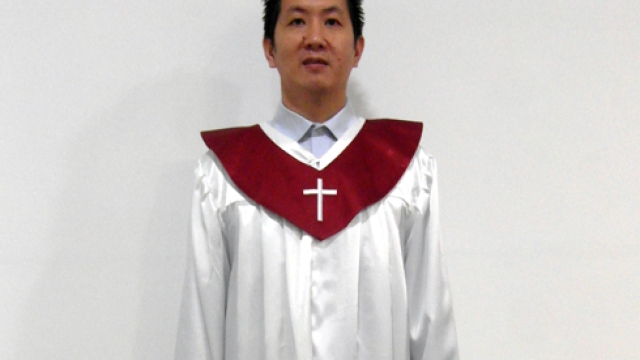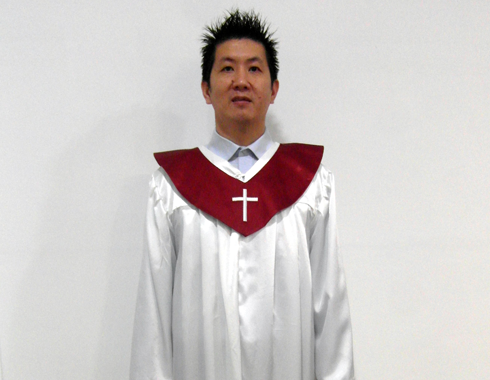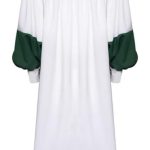
Singing in Style: Unveiling the Alluring World of Choir Robes

Step into the enchanting realm of choir robes, where traditional elegance meets harmonious melodies. A cornerstone of choral performance, these exquisite garments envelop singers in a shroud of visual allure, adding an aura of grandeur to the musical experience. With their rich history and remarkable diversity, choir robes have become iconic symbols, captivating both performers and audiences alike. Let us embark on a journey to explore the mesmerizing world of choir robes, unraveling the stories they tell and the resonance they bring to the choral stage. From the delicate folds of fabric to the intricate embellishments, every detail exudes a sense of unity and reverence, reflecting the collective spirit of a choir in splendid harmony. Discover the significance behind these majestic vestments as we delve into their vibrant colors, ceremonial customs, and the lasting impact they have on the singers who don them. Join us in exploring the captivating allure of choir robes, where style and music intertwine to create a symphony of visual and auditory delight.
Historical Evolution of Choir Robes
In the early days of Christianity, choir robes did not exist. Worship ceremonies were conducted in simple attire, often consisting of plain robes or garments. It was not until the Middle Ages that the concept of choir robes began to take shape.
During this time, the Church established a hierarchical structure, and robes played a significant role in distinguishing the different ranks of clergymen. The use of specific colors and designs helped to denote the authority and position of each individual within the church hierarchy.
As time went on, choir robes evolved further, becoming more ornate and elaborate in their design. Embroidery, intricate patterns, and luxurious fabrics became common features, reflecting the grandeur and importance of the Church and its ceremonies.
The Protestant Reformation in the 16th century brought about some changes to the style of choir robes. The desire for simpler worship practices led to a more understated and plain design for the robes. However, even in their simplicity, choir robes remained an essential symbol of reverence and unity within the congregation.
Throughout the centuries, choir robes have continued to adapt and evolve to reflect the changing trends and beliefs of the times. Today, they serve not only as a practical uniform for choirs but also as a visual representation of tradition, faith, and unity within a religious community.
Meaning and Symbolism of Choir Robes
Choir robes hold great significance within the world of choral music. Beyond being mere garments, they convey a sense of unity, tradition, and professionalism. These robes, with their distinct style and symbolic colors, help create a visual harmony that enhances the overall performance.
The color of choir robes often carries symbolic meaning. For instance, white robes are associated with purity and spirituality, reflecting the choir’s devotion and commitment to the sacred music they sing. Black robes, on the other hand, exude elegance and formality. These robes are commonly worn during more solemn performances or when the aesthetics of the setting demand a more subdued and sophisticated appearance.
Furthermore, the design of choir robes portrays a sense of unity among the singers. The consistent style and cut of the robes align everyone visually, regardless of individual body shapes or sizes. This not only eliminates distractions but also fosters a feeling of equality and inclusivity among the members. When all the singers are adorned in the same garment, the focus shifts from their individual appearances to the collective beauty of their voices and harmonies.
Choir robes also pay homage to the rich history and traditions of choral music. They allow the singers to connect with the long-standing legacy of those who came before them. By wearing these robes, modern-day choirs become part of a legacy that dates back centuries, bridging the gap between past and present. This connection to tradition instills a sense of pride and reverence, inspiring choir members to perform to the best of their abilities and carry forward the art form.
In conclusion, choir robes have a deep, symbolic meaning within the choral community. These garments function as visual representations of devotion, unity, and tradition. By wearing choir robes, singers not only enhance their visual appeal but also strengthen their bond as a collective, enabling them to create breathtaking music that resonates with audiences worldwide.
Contemporary Trends in Choir Robe Design
Childrens Choir Robes
Choir robe design has come a long way in recent years, with contemporary trends bringing fresh and exciting styles to the world of choral performance. Today, choirs have a wide array of options when it comes to choosing their robes, allowing them to truly showcase their unique identity and style.
One popular trend in choir robe design is the use of vibrant colors. Instead of sticking to traditional black and white, many choirs are opting for bold hues that reflect their personality and energy. From rich blues and royal purples to vibrant reds and sunny yellows, these colorful robes add a lively touch to any performance.
Another trend gaining popularity is the incorporation of modern fabrics and textures. While traditional robes were often made from heavy, satin-like materials, contemporary designs explore lightweight fabrics that offer comfort and ease of movement. Chiffon, silk blends, and even sustainable materials like bamboo are being used to create robes that not only look stunning but also feel great to wear.
Embracing individuality is also at the forefront of modern choir robe design. Many choirs are personalizing their robes by adding intricate embroidery or decorative elements that represent their group. Whether it’s a logo, a symbolic motif, or a unique pattern, these personalized touches make each choir’s robe truly one-of-a-kind and enhance their on-stage presence.
In conclusion, the world of choir robe design is experiencing a dynamic shift towards contemporary styles. The use of vibrant colors, modern fabrics, and personalized elements allows choirs to express their individuality and captivate audiences with their unique aesthetics. With these exciting trends, choir robes are not only functional attire but also a significant part of the visual allure in choral performances.

